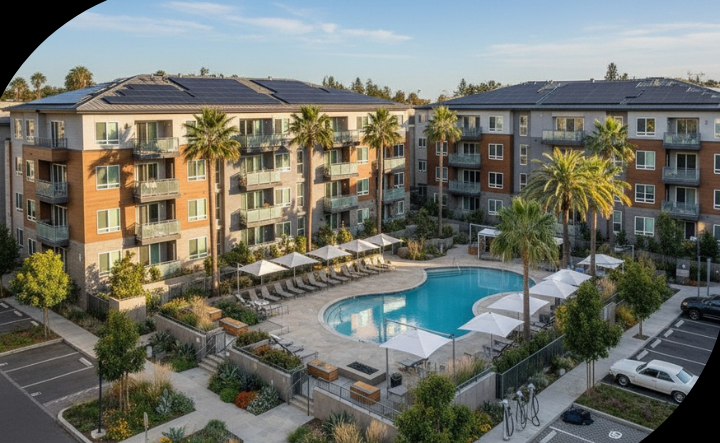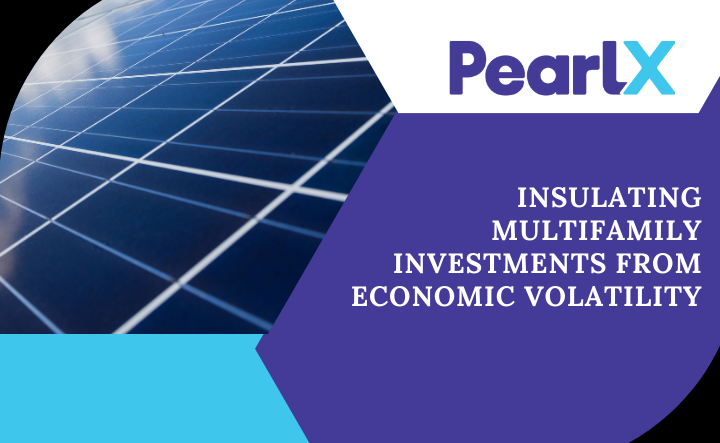
It’s no secret California faces a housing affordability crisis—but the challenge isn’t just about rent. It’s also about keeping the lights on. Electricity bills across the state have soared, piling an extra burden onto households already stretched thin.
For renters, the pain is especially acute. Over the past decade, power prices for California’s three largest utilities have jumped by more than 70%. To put that into perspective, recent analysis found that an average residential ratepayer who paid $179 in 2020 residential ratepayers could now be paying an average of about $300 a month for the same usage.
And the problem isn’t limited to recent price spikes. California renters face a structural disadvantage baked into the way utilities bill them. New research from CrossBorder Energy commissioned by PearlX finds that multifamily renters are overpaying for electricity by as much as $1.2 billion each year—roughly $360 per renter. In a state where roughly one-third of residents live in multifamily housing, that’s a massive financial burden hitting millions of households.
Today’s renters pay more than their fair share
Why are California’s renters paying so much more than their fair share for electricity? The three large Investor-Owned Utilities (IOU’s) in California bill multifamily renter households as if they were a single-family home or a single meter business, charging them as though each unit requires its own costly set of poles, wires, and transformers. In reality, multifamily properties are far more efficient to serve. According to the report, supplying power to one building that houses hundreds of residents costs up to 60% less than serving the same number of individual homes.
Yet the billing system doesn’t account for that. Renters get charged as if their unit were the only one drawing power at the site. The actual cost to deliver electricity to those multifamily meters is lower, but the bills don’t reflect the savings.
The bigger backdrop is that California’s energy billing system was built for another time. A century ago, utilities needed to be incentivized to build out the grid quickly: so their earnings were tied to building more infrastructure, and customers paid for it through their bills. While that approach once made sense, today it creates a cycle where spending on poles, wires, and substations keeps driving prices higher—even though serving multifamily housing is inherently less expensive.
Many Californians who have experienced the wildfires in the state recently might assume that wildfire costs are the main reason for recent spikes. But new analysis shows they account for only about 12% of utility spending thus far Much of the rest comes from grid upgrades that feed into the outdated cost model. So instead of renters benefiting from the efficiencies of multifamily living, they’re stuck subsidizing a system that doesn’t reflect today’s realities.
This disconnect has a very real human impact. Multifamily renters in California are more likely to come from historically disadvantaged communities and are less likely to own assets like cars or homes that help build long-term financial security. When electricity consumes a bigger slice of their income, the effect reaches beyond their monthly budget and limits their ability to save or plan ahead.
Policy changes that could immediately help fix this problem
The good news is that the State of California has immediate options that could immediately help solve this problem:
How distributed solar systems change the game
Solar energy adoption offers a practical way to make housing more stable and affordable. With distributed energy resources (DERs), multifamily properties can generate their own clean power on site—cutting costs for residents, locking in long term electric rates, improving affordability, and making buildings more attractive to renters.
Research from the University of Pennsylvania shows why this matters: only 46% of households earning under $25,000 annually own homes, leaving renters locked out of traditional rooftop solar savings. Yet when renters do gain access, their overall “energy burden”—the percentage of income spent on utilities—drops significantly.
For property owners and developers, DERs offers an equally compelling advantage. Partnering with PearlX means solar installation and maintenance come at no cost to the building owner. Residents enjoy lower electricity bills, while landlords gain a new amenity that strengthens tenant satisfaction and retention.
And the benefits extend even further. Any surplus energy from these systems flows back into the grid, helping stabilize California’s power supply and lowering costs community-wide. Each multifamily property that adopts solar through PearlX supports its tenants, while also contributing to a fairer, more resilient energy future for the state.
DERs reduce the need for IOUs to make costly upgrades to the generation, transmission and distribution systems that get electricity into our homes and businesses. If we are generating, storing and consuming power in the same place, the overall electric grid becomes cheaper for everyone when we remove the need to pay for massive utility investments and the large profits their shareholders enjoy.
The brighter path forward
Affordability in California is a tough challenge with no single solution. But giving renters access to lower-cost, cleaner energy is a tangible step in the right direction. Solar distributed energy systems represent a practical, scalable way to reduce pressure on households while helping California meet its clean energy goals.
While the California Public Utilities Commission should immediately take action to reduce the electric burden on Multifamily customers, property owners have options. For landlords, the opportunity is straightforward. With PearlX, you can turn your property into part of the solution: lowering costs for residents, boosting your building’s appeal, and doing it all without added capital or operational headaches.
In a state where electricity bills show no sign of slowing down, solar power is one clear way to make housing more affordable—and to create brighter, fairer communities for everyone.


BACK TO ALL The multifamily housing sector continues to be under a variety of mounting pressures. Construction costs have gone up 50% since 2019, looming

BACK TO ALL While California multifamily owners and developers are widely embracing solar power systems, recent changes to the state’s solar Net Energy Metering